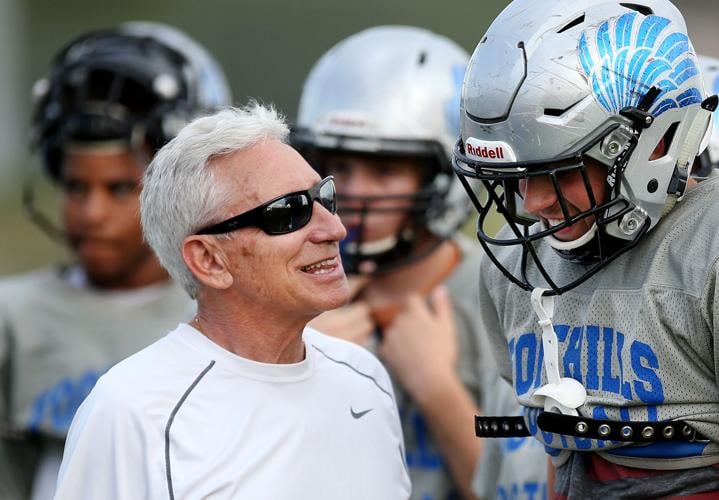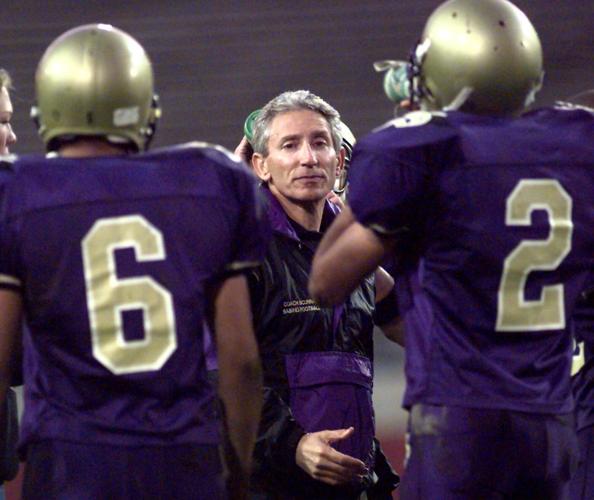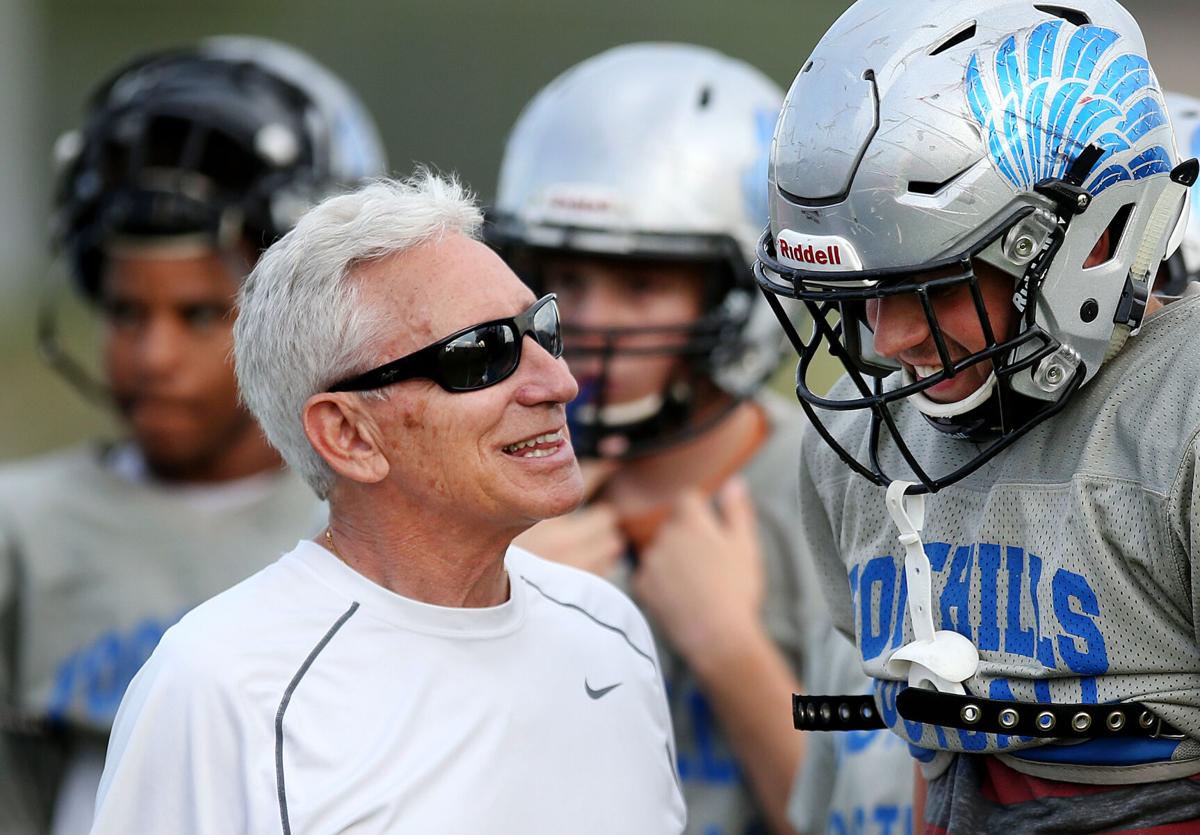Pima College spent about 10 months preparing for its inaugural football season, 2001, turning over rocks to find enough bodies to fill the roster and step into the Western States Football League, then the strongest juco football conference in America.
The newly named Pima College Storm did not have a proper practice facility, no home field and a razor-thin budget.
It was no place for the timid.
A few months before the inaugural game, PCC coach Jeff Scurran was given a copy of the 2001 WSFL schedule. The opening night opponent was to be Glendale Community College, the defending NJCAA national champion.
The man who coached Sabino High School to the best-ever decade of Tucson prep football — 112-18-1 with three state championships and five appearances in 1990s state title games — appeared to be overmatched for once.
Yet on a Saturday night in late August, Pima College stunned Glendale, winning 28-20 on a memorable night that an overflow crowd estimated at 7,500 filled every conceivable space at the Santa Rita High School facility.

Scurran, who is No. 60 on our list of Tucson’s Top 100 Sports Figures of the last 100 years, soon proved that his epic decade of Sabino Sabercats football was not a case of (a) having more resources than the next guy and (b) being in the right place at the right time.
For Scurran, the son of a World War II medic who made his living as a men’s apparel salesman in Florida, he always seemed to be at the right place at the right time.
He coached Pima College to a 26-17 record over four seasons, capped by a victory over No. 2 Kilgore College of Texas in the Pilgrim’s Pride Bowl, finishing the 2004 season ranked No. 5 nationally. He had announced his resignation in mid-season after differences with the PCC administration.
Even though he was 56, Scurran had plenty of fuel left for Act III and Act IV, coaching perennial prep football doormats Santa Rita and Catalina Foothills to state championship games before leaving CFHS to coach in Germany two years ago.
In both cases, Santa Rita and Catalina Foothills were coming off 0-10 seasons when Scurran agreed to coach them, ultimately delivering them to prominence the way he had at Sabino and Pima.
“I’ve got this silly wanderlust,’’ he told me after leaving Foothills in 2018. “I don’t necessarily believe the grass is greener somewhere else, but I want to face new challenges.’’

Jeff Scurran’s powerhouse Sabino teams in the 1990s won three state championships and advanced to two other state finals.
If you count all of Scurran’s head coaching victories — including a three-year, 22-10 start at Canyon del Oro High School in the mid-'80s and high school coaching stops in Lake Tahoe, Nevada, and at two Oregon schools — he reached 300 career wins in 2018.
No one could have seen even one of those victories coming.
After earning an undergraduate degree at Florida in the late 1960s, Scurran was studying at Georgia State University, working toward a possible career as a school counselor and administrator. He moved to Tucson in 1972 to continue his graduate work and while here became a volunteer intern with UA football coach Bob Weber’s staff, which was fired at year’s end.
“I really had the fire to coach at that time,’’ he said. “I moved to Nevada and then Oregon, starting at the bottom. When a former UA assistant coach, Gary Bernardi, recruited one of my players at West Linn High School near Portland, I asked him about the high school scene in Tucson.’’
Bernardi recommended that Scurran phone ex-Wildcat football player and Salpointe Catholic head coach Jerry Davitch, then the director of TUSD’s athletic operation. Davitch told Scurran about an opening at CDO and thus began a journey that saw Scurran coach Sabino to 1990, 1992 and 1998 state championships, followed by similar football magic at PCC, Santa Rita and Catalina Foothills.
Two months ago, I met Scurran for lunch before he was to move to Germany for a second stint as head coach in Germany’s pro football league.
“I’ve still got a lot left to accomplish,’’ he said. “I don’t know if I’ll ever truly walk away from coaching.’’







